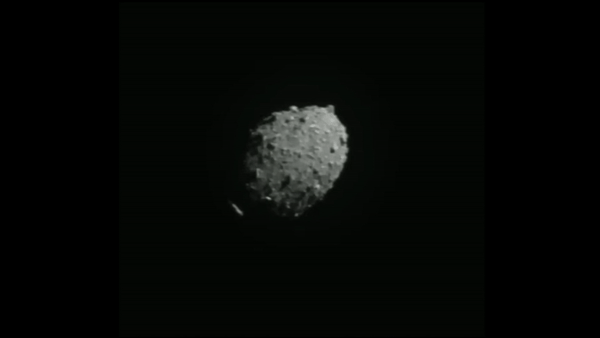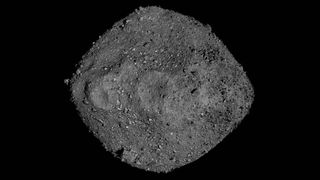Today, astronomers and space enthusiasts around the world collectively marvel at our changing presence in the universe, especially as we drift through the cosmos amid large asteroids like the one that wiped out the dinosaurs 66 million years ago.
June 30 marks Asteroid Day, a holiday observed each year to reflect on the prospect of a collision between Earth and a planet-destroying space rock and what scientists are doing to mitigate that risk.
This day is celebrated on the occasion of the anniversary of 1908. Tunguska Event In Russia, an asteroid the size of half a football field smashed into the air above a remote Siberian forest, the largest asteroid collision ever seen on Earth. With a flash brighter than the sun and a thunderous crash, the fireball killed herds of reindeer, tossed people up to 40 miles (64 kilometers) from the impact from their porches, and flattened an estimated 80 million trees. The impact sent so much dust into the air that sunsets burned red for days, and people as far away as Asia could read the newspaper outside until midnight.
More recently, in February 2013, a 20-meter-high asteroid struck Earth near the city of Chelyabinsk, Russia, injuring about 1,500 people and shattering more than 3,000 windows in apartments and commercial buildings. The shockwave generated by the impact was so strong that it circled our planet twice, scientists say.
Related: Phosphate in NASA’s OSIRIS-REx asteroid sample suggests space rock Bennu came from an ocean world
Although these devastating space rocks land more often in the oceans than on land, the asteroid impact in 2013, just a decade ago, “reminded us that these things happen,” Nick Moskovitz of the Lowell Observatory in Arizona told Space.com. “Asteroids have this weird duality in that they probably delivered Earth to Earth.” ingredients for life on Earth, but at the same time, a bad impact in the right place could cause significant damage to anyone nearby.
Asteroid Day is a global awareness campaign led by the Asteroid Foundation in Luxembourg, and has been an official day on the United Nations calendar since December 2016. In previous years, the day has been celebrated with dozens of local events at institutions around the world, with conferences focusing on asteroid science that were topical that year.
Last year, for example, many events focused on NASA’s resounding success DART Missionthat crashed a refrigerator-sized spacecraft into an asteroid named Dimorphos and knocked the space rock out of its 33-minute orbit, most likely change the shape of the object DART was humanity’s first planetary defense test and proved that scientists had the technology to defend Earth if a similar asteroid were to collide with our planet. “Last year, Asteroid Day was a lot like DART,” Moskovitz said. “It’s a fun day.”

This year, the celebration is taking place in about 30 institutions around the world, including in India, Africa, Europe and Mexico. It includes lectures on the European Hera mission, the successor to DART, which is scheduled to launch in October and aims to assess the mission’s consequences. On Friday and Saturday (28 and 29 June) in Luxembourg, where the Asteroid Foundation is based, events ranged from seminars on asteroid science and space sustainability to workshops where visitors could build spacecraft with Legos. In the evening, participants explored the night sky in real time by virtually controlling telescopes in Tuscany, Italy, under the guidance of astronomer Gianluca Masi, who manages the Virtual Telescope project.
here is a map describing the locations of similar events taking place around the world. If there are none nearby, you can tune in to online discussions about asteroids led by astronauts and industry experts that the foundation recently broadcast.
In the United States, hundreds of people are expected to join scientists today (June 30) for full tours of Meteor Crater, where asteroid science demonstrations and themed games are planned, as well as food and drinks.
“Right here in northern Arizona, we can see the literal impact of asteroids on our planet,” Matt Kent, president and CEO of Meteor Crater and the Barringer Space Museum, said in a statement. previous announcement“What better place than here to host an Asteroid Day event?”
At 7 p.m. local time, visitors will begin heading to Lowell Observatory, about a half-hour drive away, to view telescopes and attend science presentations by astronomers including Moskovitz. Since Asteroid Day falls on a weekend this year, “we could see quite a large crowd between the two sites,” he said.
In Lowell, research scientist Brian Skiff will discuss Venus’ strange quasi-moon. Also considered a near-Earth asteroid, this space rock was discovered in 2002 and recently given the catchy name ZoozveIt appears to orbit Venus but is not permanently bound to the planet’s gravitational tides, meaning it will eventually be expelled. It is considered a potentially hazardous space rock, but it is not on a collision course with Earth.

Moskovitz will also present at Lowell a project that uses commercially available security cameras to take pictures of the night sky looking for meteors, eventually capturing up to 500 each night. The project, called LO-CAMS (short for Lowell Observatory Cameras for All-Sky Meteor Surveillance), “is about using cheap equipment for science,” he said. “The night sky can be very active if you have the right instruments to observe it.”
The project began eight years ago as Moskovitz’s hobby and has since grown into a full-fledged operation with dozens of cameras on the roofs of scientific institutions, schools, universities and, occasionally, even private homes across Arizona. From the HD-resolution photographs these cameras capture, Moskovitz and the LO-CAMS team can predict the trajectories of pea-sized meteors and later search for pieces that may have survived their journey to the ground, “like the ultimate treasure hunt,” Moskovitz said.
In an intriguing cosmic coincidence, this year’s Asteroid Day falls right after two asteroids just passed Earth by. Neither was about to impact our planet, to be clear, but the rendezvous was remarkable nonetheless. The larger of the two, a Mount Everest-sized asteroid named 415029 (2011 UL21), zoomed past our planet on Thursday (June 27), flying about 17 times farther from Earth than the moon is, on average. However, the smaller asteroid, dubbed 2024 MK, hurtled into the moon’s orbit around Earth on Saturday (June 29), close enough to be seen by astronomers using small telescopes in dark-sky locations.
If an asteroid were ever to collide with Earth, asteroid deflection missions like DART would be crucial to mitigating the risk of impact. The mission, which is universally considered a success on many levels, is a testament to our current technology and the team of more than a hundred scientists and engineers who developed it. The effectiveness of any strategy, however, really depends on the size of the space rock and the time we have. The only way to reduce the risk of a sudden asteroid collision is to find and track as many asteroids as possible, because the ones that pose a risk to Earth are “typically objects discovered today with potential impacts decades or centuries from now,” Moskovitz said.

Technological advances in recent years have allowed scientists to catalogue an increasing number of asteroids in our solar system, thanks in part to artificial intelligence software that has already revealed more than 27,000 asteroids. overlooked in telescope imagesAt least two million more space rocks are expected to be discovered by next year. Vera C. Rubin Observatorywhich, starting next year, will take images of the southern sky every night for at least a decade. At that rate, the observatory is expected to double the number of known asteroids in its first six months of operation.
Over the next few decades, scientists may be able to mitigate — or even largely eliminate — the risk associated with large asteroid impacts, Moskovitz said.
“It’s a luxury that dinosaurs didn’t have, and it’s something that will always benefit us for the future of our species.”